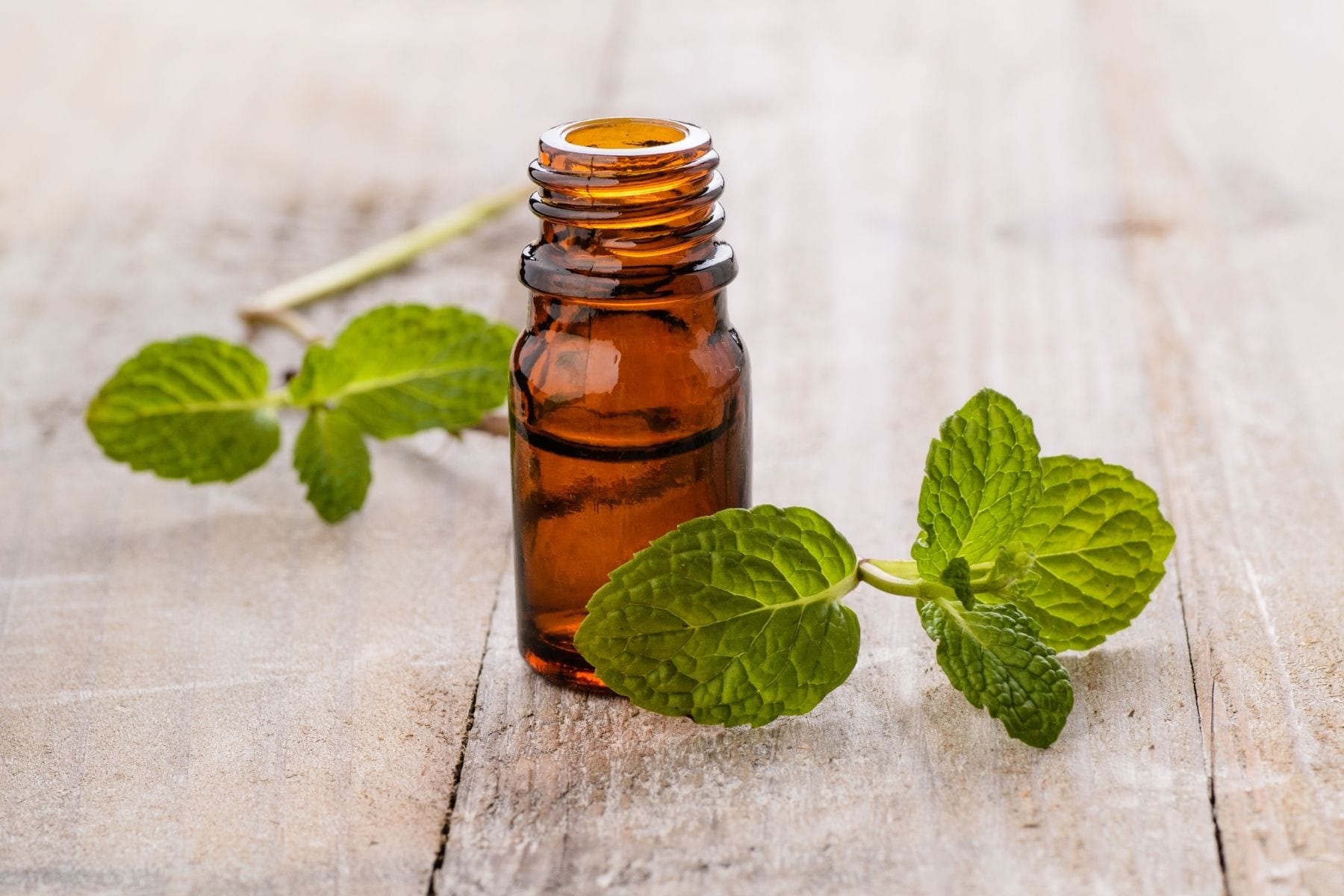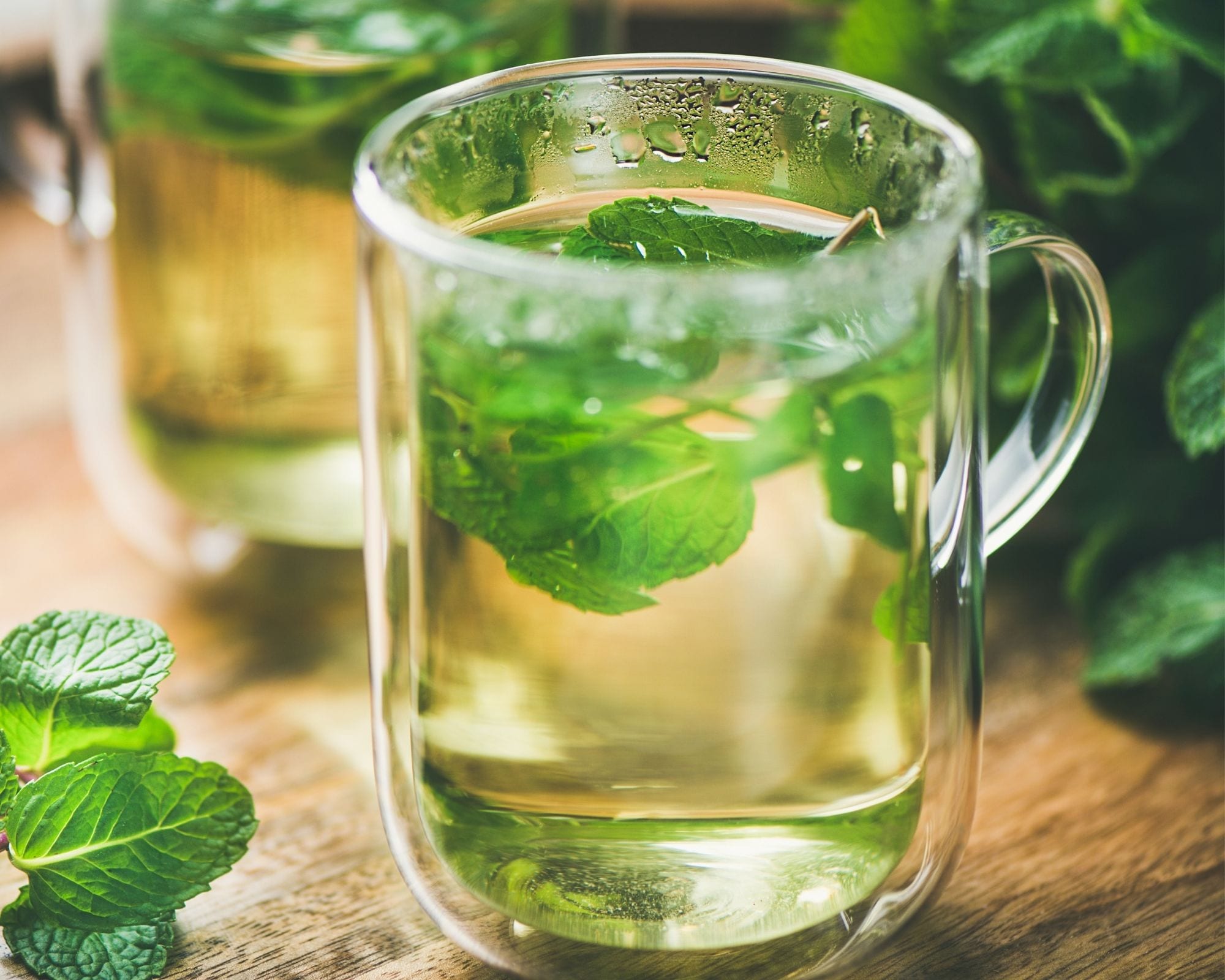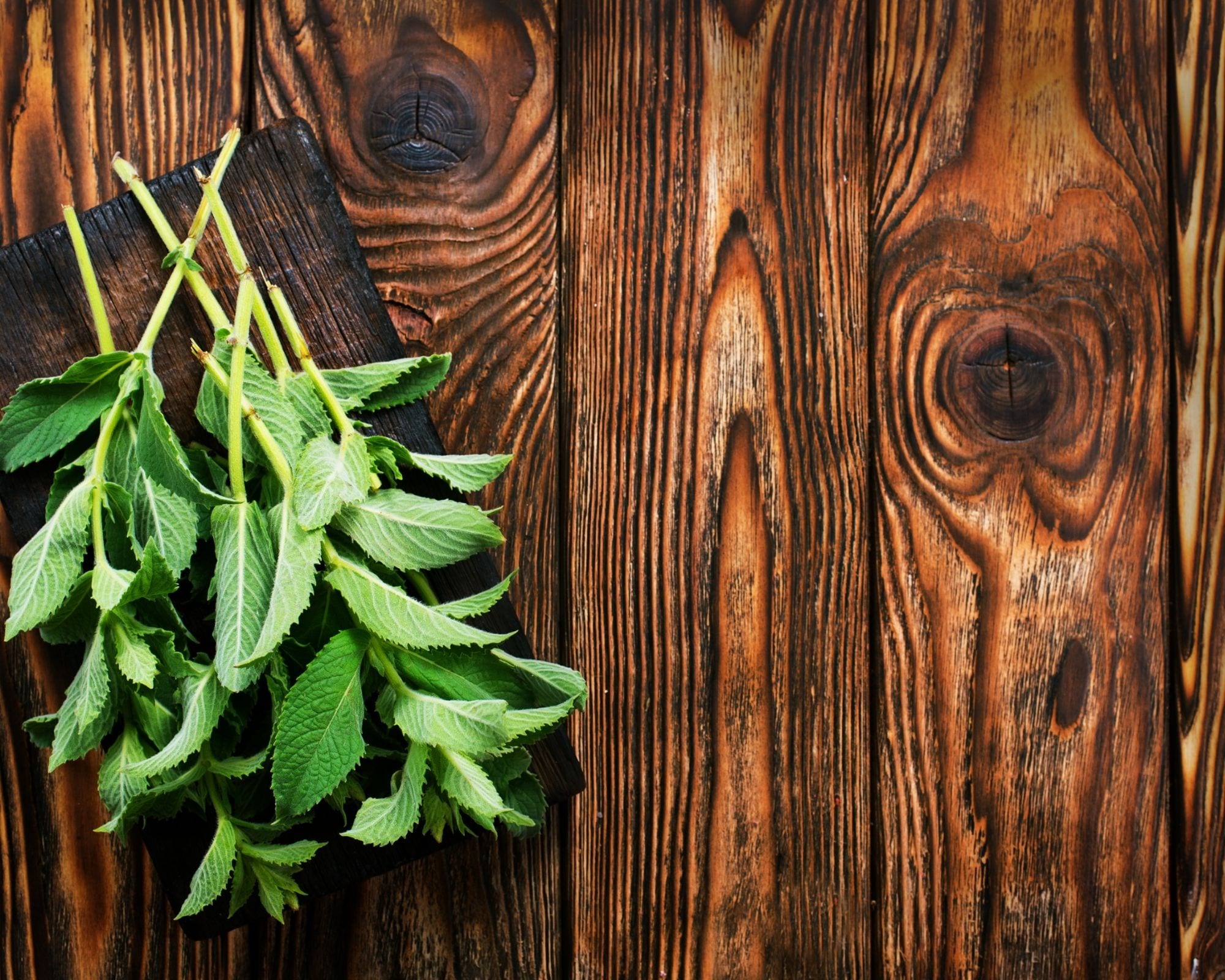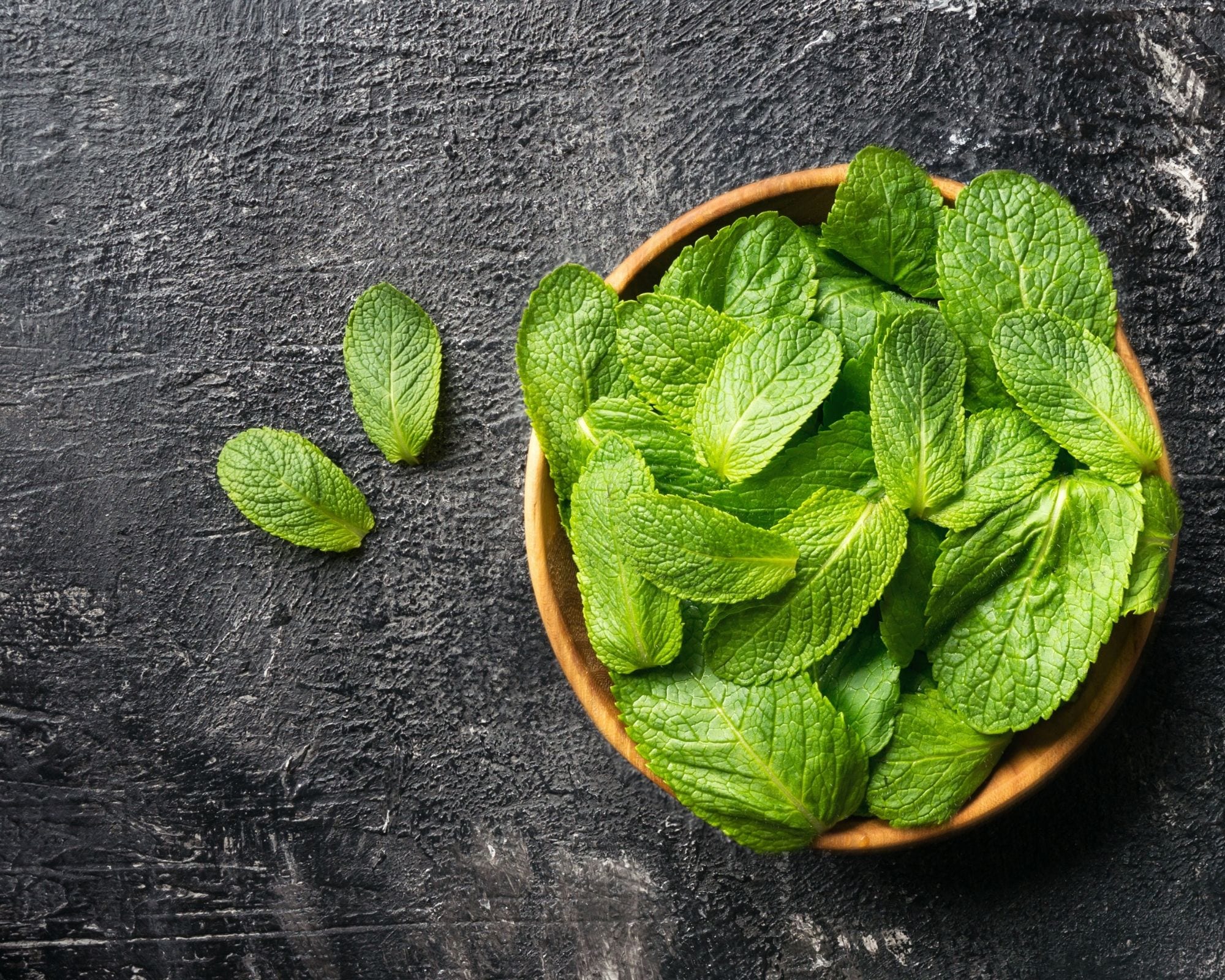Invigorating and healing: Mint is a very special herb. To find out more about both the effects and delights of mint leaves as well as other practical tips, read on.
Whether it’s a soothing tea made from fresh or dried mint leaves or a tangy yoghurt dip, there are many ways to fall in love with mint. The most well-known of all varieties is peppermint, but it’s not the only one. Thanks to milder varieties, even mint sceptics are daring to try this almost spicy herb. In addition to its refreshing aroma, mint also has proven healing properties. Learn more about this aromatic herb, its uses and how to grow your own for the freshest of all refreshments.
Peppermint, spearmint, water mint, apple mint, chocolate mint: The list is long. Belonging to the Lamiaceae family, there are about 30 different species of mint and many hybrids. Some plants grow up to one meter tall, and there is a wide variety of appearances and tastes, depending on the species. The best known of these is the peppermint, which is often what people mean when they talk about “mint”.
Peppermint: a chance encounter with lasting consequences
We owe this well-known mint variety to an accidental, natural cross between spearmint and water mint. Peppermint’s most characteristic feature is its pungent flavour. Nowadays, the herb is a normal, cultivated plant, predominantly found in the northern hemisphere. Its variations and closely related cross-breeds bear the Latin name “piperita”. These include aromatic varieties such as chocolate mint, orange mint and Japanese medicinal mint.
The healing properties of peppermint have long been known and are well researched. This proven medicinal herb is therefore beneficial as a tea ingredient. The decisive factor is the essential oil contained in the leaves, which is mainly made up of menthol. Thanks to its healing properties, peppermint oil is therefore also used in isolated form.
Menthol: the healing power of mint oil
Whether for stomach and intestinal cramps, colds or headaches, the uses of menthol are various and sundry. When ingested, mint tea or mint oil has been shown to relieve cramps in the muscles of the stomach and intestines. It can also be used as an expectorant with anti-inflammatory properties that make it effective in the relief of cold symptoms. Even just one cup of peppermint tea can help. Two to three tea bags increase the dose for more severe symptoms.
Japanese peppermint oil, otherwise known as “Japanese medicinal plant oil”, can also be a natural way to soothe tension headaches or muscle and nerve pain. Here it is applied externally and rubbed into the skin of the affected areas of the body. Caution: Don’t forget to wash your hands. Otherwise, any accidental contact with your eyes or mucous membranes may be painful.
Also important: You can have too much of a good thing! The healing properties of peppermint bring with them certain disadvantages if used every day. For example, if you fall ill, the effects may be weaker. The use of the medicinal herb is also counterproductive when used for certain symptoms. For those who suffer from heartburn or bile problems, be careful. Such problems can be exacerbated by the effects of peppermint.

In the kitchen: the types of mint and their uses
As great as peppermint is as a medicinal herb, it’s not everyone’s cup of tea in the kitchen due to its pungency. This is where other types of mint come in. As a seasoning ingredient for leaf salads, chutneys, meat and fish, or mint sauces, the much milder spearmint is particularly popular. Moroccan mint, on the other hand, goes particularly well with cereal dishes such as rice or bulgur and is ideal for fruity cocktails. Peppermints are great for refining sweet dishes. Chocolate mint, for example, combines that fresh mint aroma with just a hint of chocolate flavour and is simply delightful in sweet milk desserts. The pungent peppermints go particularly well with fruit desserts or as a garnish for fruity cakes.
In general, mints harmonise with a great many foods and spices – from pulses to vegetables or yoghurt. The pungent herb brings an Asian flair to your dishes and serves as a perfect complement to chili or garlic. In spicy herb quarks, basil, coriander or parsley also go very well with mint. Only the dried leaves are suitable for cooked dishes, as the aroma of fresh leaves is quickly lost in the cooking process.
Even the number one foodstuff, drinking water, is immediately transformed into a naturally aromatic refreshment when a sprig of strawberry mint adorns the glass. Otherwise, peppermint is classic for teas and other drinks. The fresh leaves add an extra bit of freshness to lemonades and cocktails. Both dried and fresh mint leaves are perfect for tea. However, there are big differences in the taste. If you haven’t experienced the difference, just try a tea made from fresh mint leaves. Pour hot water over a few leaves and let the infusion steep, covered, for about seven minutes. The optional addition of orange or lemon slices and a little ginger transforms the tea into a veritable fountain of health.

Homegrown and well-preserved: our guide
The best way to get fresh mint is to grow it yourself. Peppermint is very easy to care for. A shady, moist location with humus-rich soil provide the plant with ideal growing conditions. In no time at all, however, the herb shoots up everywhere if you don’t put any limits on the strong underground runners. Using a rhizome barrier or planting the mint in a pot can help. In spring, the first leaves are rich in aroma and thus ready for harvesting. The herb produces most of its flavours shortly before flowering. It’s best to harvest in the early morning hours. That’s when the essential oil content is at its highest. To do so, cut off the stems including the leaves nearer to the ground.
Now you have a choice: Enjoy the mint while its still fresh, dry it or preserve it in the freezer. No matter what you decide to do, clean the mint under running water beforehand and carefully pat it dry with a cloth. To dry, simply hang the sprigs in bunches in a warm, dark place. Freezing works best if the whole shoots are first pre-frozen, spaced apart on a tray, and only then placed together in a suitable container. Otherwise, all the shoots could freeze together, creating a large clump. Have fun planting, harvesting, preparing and enjoying!

